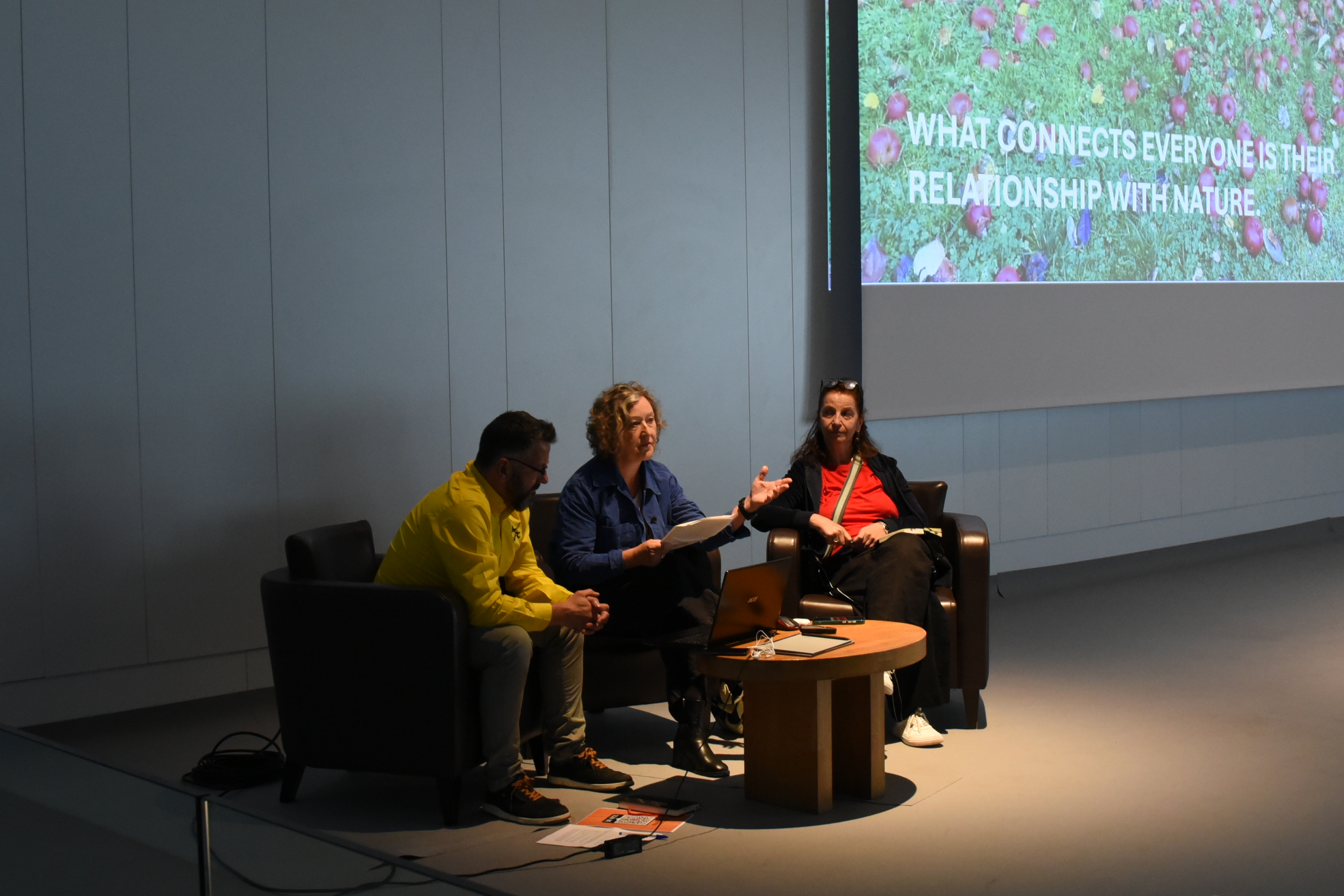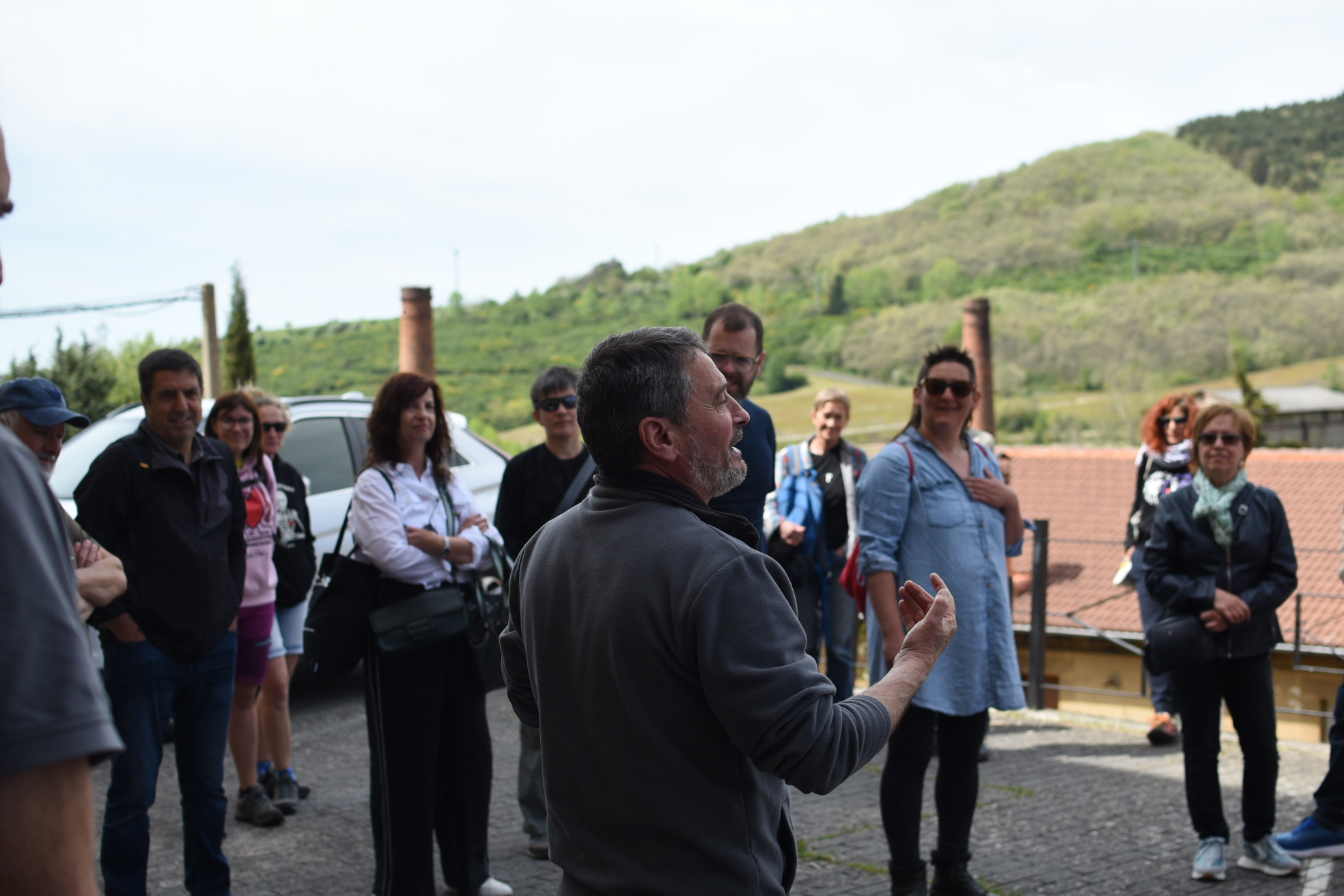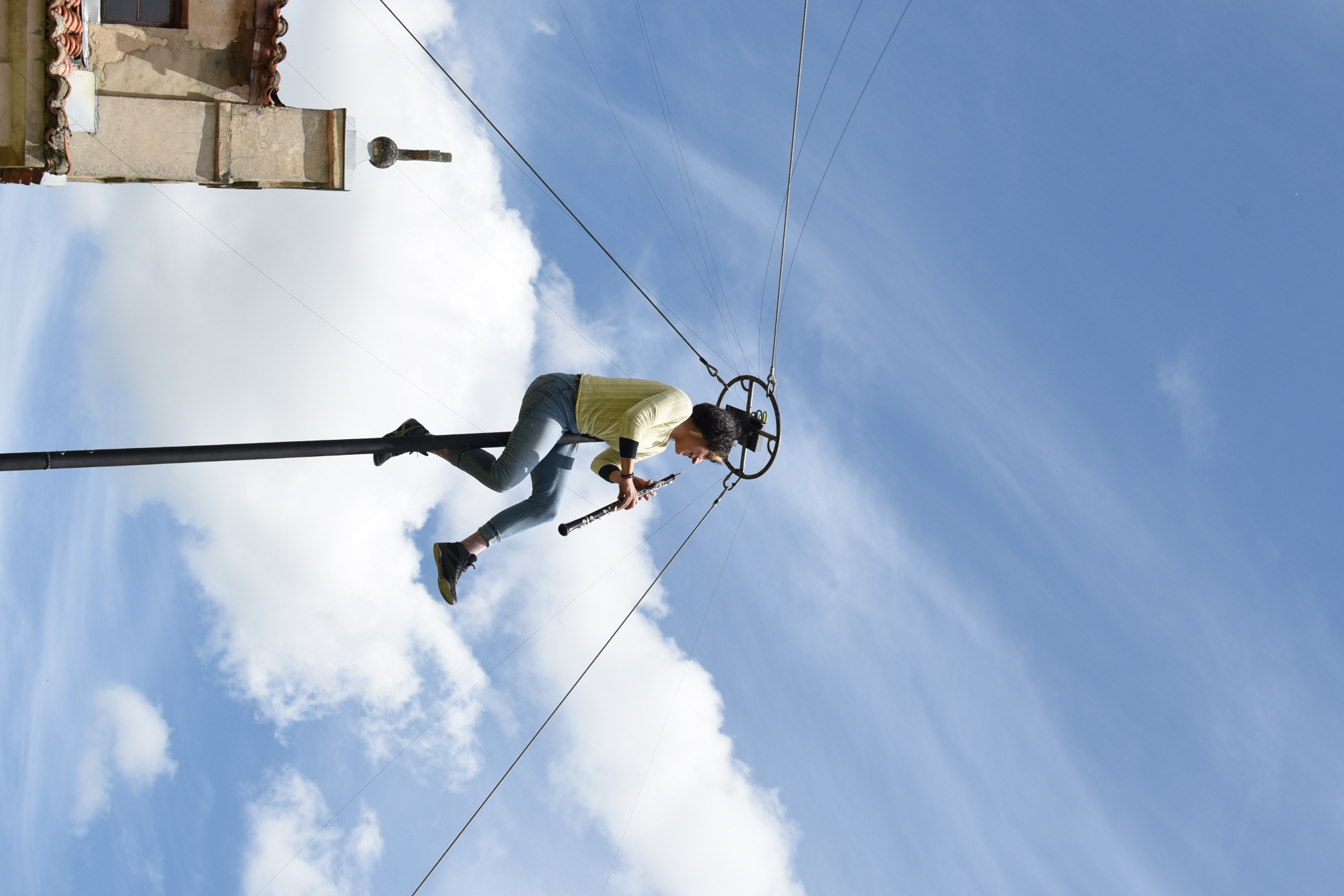This is how the Repairing the Earth Sessions went

Encounters to imagine new ways of healing territories wounded by industry and neglect
The conference “Repair the Land” was held on May 24 and 25, 2025 in Ponferrada and Barruelo de Santullán, in the framework of the European project Art Living Lab to Repair the Land, coordinated by the organization Concomitentes. The conference triggered a deep reflection on the role of participatory art as a tool for repair in territories marked by industrial legacy, extractivism and abandonment.
The first day took place at La Térmica Cultural in Ponferrada, where artists, researchers, mediators and inhabitants of the territory met to share knowledge and experiences around the idea of reparation. The event opened with an intervention by Fran Quiroga, who proposed a critical reading of the need to reassemble knowledge -both technical and popular- to address the damage caused in the territories by centuries of exploitation. He was followed by Mario Pansera, who presented a post-growth vision of the right to redress as the foundation of a democracy in which communities can build fairer futures. Later, Belén Sola introduced the concept of autoethnography as a collective tool to understand the wounds of the territory from the lived, the intimate and the shared.
The day concluded with a round table discussion with the participation of Sonja Leboš from Croatia, Susanne Burmester from Germany and Alfredo Escapa from Spain. Through the presentation of their projects, we were able to see how the post-industrial territories in which they work share not only environmental and social issues, but also the desire to reimagine themselves through culture and collective action.

On the second day, in Barruelo de Santullán, an immersive experience was developed in the territory itself. The meeting point was the Mining Interpretation Center, where Fernando Cuevas offered a guided tour that contextualized the mining history of the municipality and explained the work of the institution as well as the material conditions from which it works. From there, we toured the abandoned industrial area of the town together with members of the “Secuelas Energéticas” project, coordinated by mediator Alfredo Escapa.

Then, José Luis Ruiz, member of ARPI, led a walk through the Barrueliense Stratotype, which gave context about the geological heritage of Barruelo de Santullán that connects the memory of the subsoil with the human history of the place.
Finally, the Colectivo Niñas Malditas presented a performance that ended the day.



Throughout the two days, a fertile dialogue was woven between critical thinking, artistic practices and local knowledge. “Repairing the Earth” was proposed as a bid to open collective processes that involve communities in the reconfiguration of their landscapes, memories and futures. Beyond the speeches, what remained was a shared feeling: the possibility of repairing not only the land, but also the ties broken by decades of extractivism.
